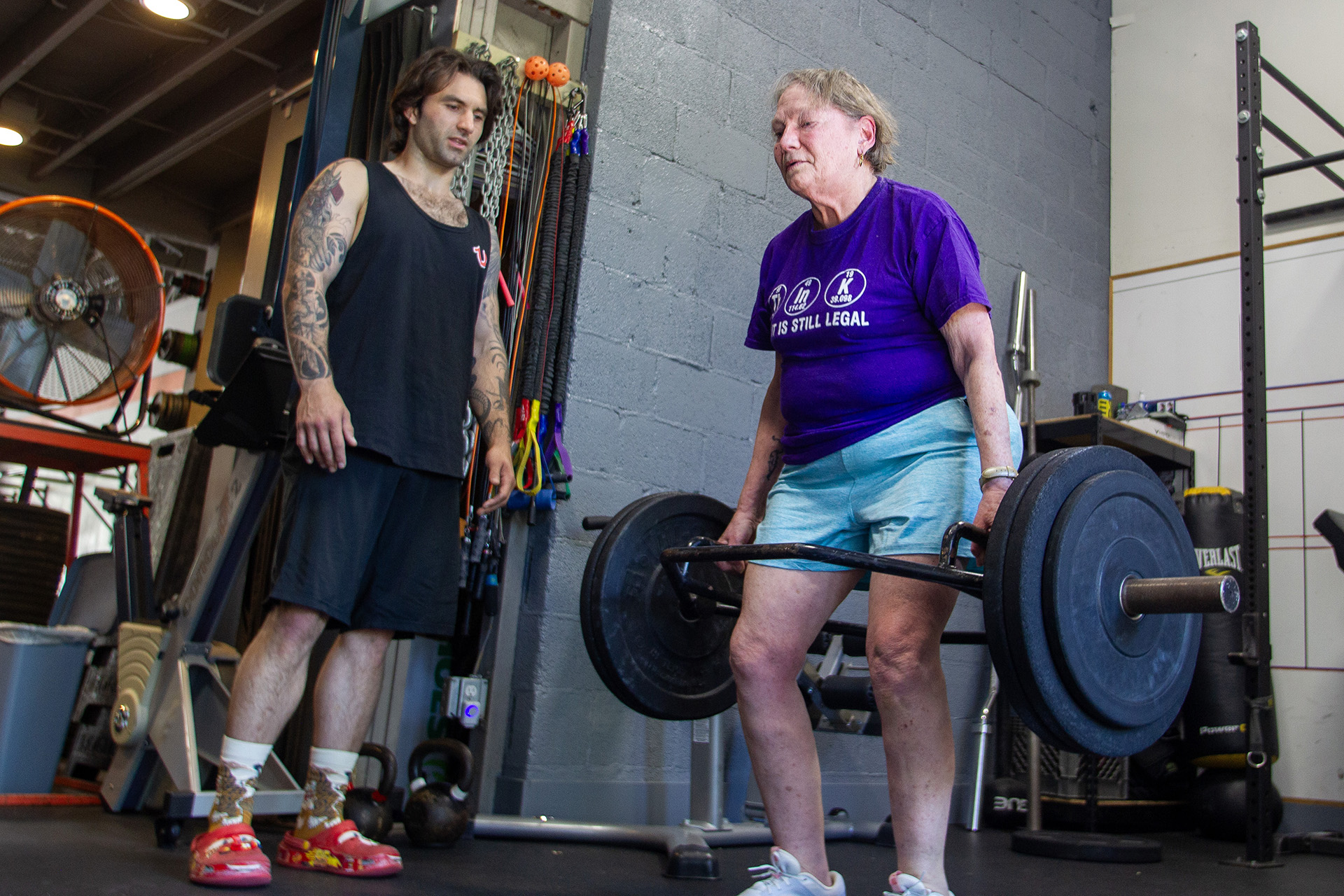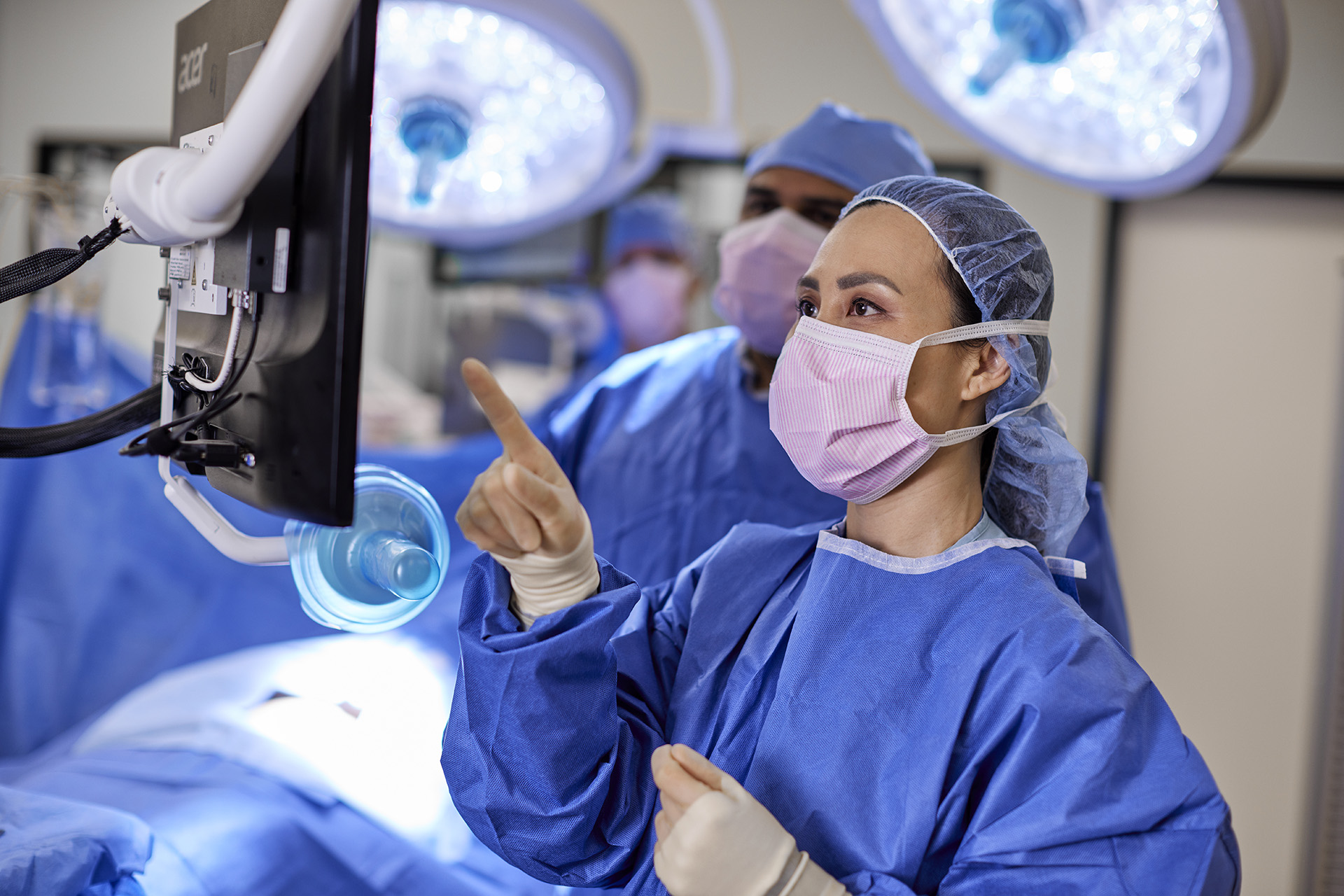When Kathryn Gallagher’s 13-year-old artificial heart valve started to fail, the oxygen-rich blood feeding her organs, tissues, and muscles slowed to a trickle.
The condition, known as aortic valve stenosis, brought everything she loved doing to a standstill.
The 80-year-old weightlifter and exercise junky could barely climb the stairs in her house without having to rest midway.
“It was just so hard to get up and start moving,” said Gallagher. “Anything strenuous was just exhausting.”
Thirteen years ago, she had open heart surgery to replace her aortic valve, but now that replacement valve was nearing the end of its life. The same operation to replace the first valve was deemed too risky because of her age. The only alternative would be a minimally invasive catheter valve replacement, which can be safer for older patients.
But Gallagher’s failing artificial heart valve posed the risk of blocking important arteries during the procedure, which could starve the heart muscle of blood.

That was until Kaiser Permanente began participating in a clinical trial to use a newly developed device that would make replacing an old one safer. And it could also be placed using a catheter through the groin, a safer option for older patients.
While Gallagher was not chosen for the clinical trial, as soon as the U.S. Food and Drug Administration approved the device, cardiologists at Kaiser Permanente San Francisco Medical Center called her.
In April, she was the first patient in Northern California to be treated with the approved device, an achievement based on Kaiser Permanente’s involvement in the clinical trial and surgical expertise in the area.
“I’m just so happy we were able to treat her, and she is able to feel better,” said Emily Perdoncin, MD, an interventional cardiologist at Kaiser Permanente San Francisco Medical Center who successfully placed a new aortic valve in Gallagher’s heart. “I have a particular interest in patients who don’t have great options in this area, so I am very happy about the outcome.”
Gallagher said she was keenly aware of those limited options available to her before the device was approved.
“I had kind of resigned myself to having a bad heart,” said Gallagher. “But when they called me, I was so happy. I figured this was my chance to improve, and boy, oh boy, it really was. I’m back to doing my CrossFit workouts, and I can climb the stairs like a normal person.”
Jacob Mishell, MD, medical director of the Kaiser Permanente Northern California Structural Heart Program, helped recruit Dr. Perdoncin from Emory University Hospital in Atlanta specifically to do such procedures.
Previously, replacing an old artificial heart valve through an artery in the groin was considered potentially life threatening because a piece of the old one could block one or both coronary arteries during the procedure, causing cardiac arrest. That problem was eliminated with the newly approved device.
“Before this, there was no FDA-approved device to treat this,” said Dr. Mishell. “There was a procedure, but it was very risky. Dr. Perdoncin has brought her expertise to patients who have very poor options, and we’re very happy to have her.”

Today, Gallagher is back lifting weights and doing squats, something she started when she was 72.
“I feel so frisky after doing my workouts now, instead of feeling exhausted,” said Gallagher. “Just in general my life has improved.”




